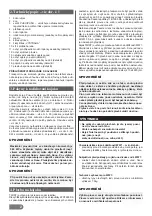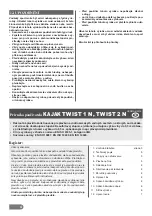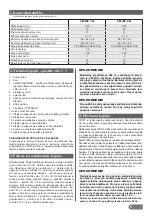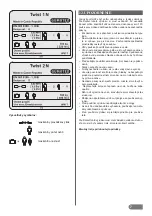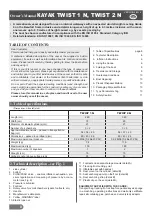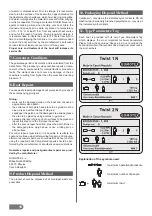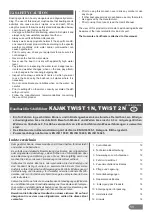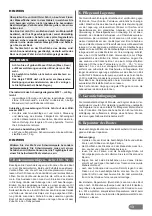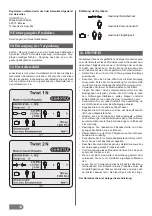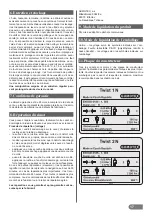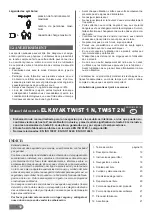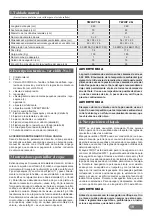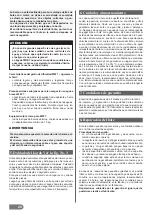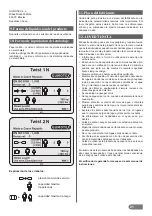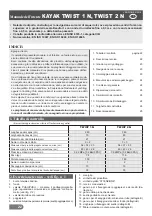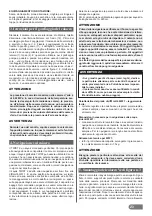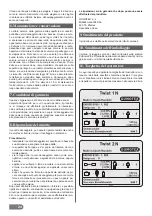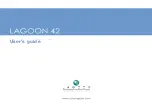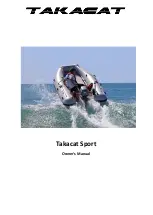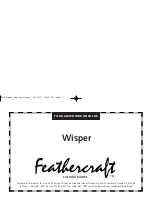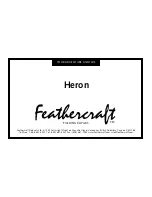
9
3. Instructions for the inflation of the kayak
Unfold the kayak. If you want to use the direction fi n, insert it in
the fi xture at the bottom (12). Infl ate the footrest before moun-
ting it. For the way of operating the valve (6) see Fig. 2. Attach
the footrest (5) to the anchorage mount (11) on the fl oor. See
Detail A for correct routing of the strap through the clip. The air
chambers shall be infl ated in the following order: side drums
(1), bottom (2). For the infl ation it is favourable to use a foot
pump or piston pump with using the valve adapter – see Fig.
2b (the adapter is a part of the gluing kit). Before the start of
infl ating, check the condition of the valves. Set the valves to
the Closed position. For the way of operating of the valve see
Fig. 2. Infl ate the air chambers to the set operating pressure.
Use a pressure gauge with a corresponding adaptor (optional
equipment) for measuring the correct operating pressure - re-
fer to Fig. 2a. The wrench for the installation of the valve – see
Fig. 2c – is an optional accessory.
ATTENTION
The maximum operational pressure in air chambers is
0.02 MPa. If the ambient temperature increases (e.g.
owing to sunlight), the pressure in the air chambers of
the canoe can rise rapidly. We recommend releasing
some air from all air chambers of the canoe after pulling
it out of the water. This will prevent possible destruction
of the air chambers. However, do not forget to continu-
ously check air pressure in the chambers afterwards, too.
ATTENTION
When using the boat, always seal the valves with their
valve caps. This will keep dirt out of the valves. Dirt can-
cause leaky valve seals.
4. Using the kayak
The TWIST kayak is a single-seat infl atable kayak. Whenever
the kayak is used on waterways, Waterway Traffi c Rules
should be observed.
The operation of the TWIST infl atable kayak does not require
any licence, provided that the people who operate the kayak
know the techniques of small boat operation to the extent re-
quired for its operation as well as the valid navigation rules of
the particular country.
The TWIST kayak is designed for use on rivers up to Diffi cul-
ty Grade WW 1. It can also be used on lakes. The kayak is
particularly suitable for beginners due to its simple and com-
pact design and easy manoeuvrability. The space on the stern
can be used for storing baggage. When touring, one person
sits on the seat, leaning against the backrest with their heels
supported on the footrest. The shape of the foot-rest corre-
sponds to diff erent heights of kayakers, who can hence easily
fi nd the position most comfortable for them without further set-
-up. The person travelling in the kayak should wear a fl otation
life-jacket. Use a double-blade kayak paddle with a length of
(210–220) cm.
ATTENTION
Prior to using the kayak, check whether it is necessary
to observe any special regulations, restrictions or ru-
les connected with the river, surface of water or area in
which you intend to use it.
The boat is not designed to be towed behind motorbo-
ats, nor may it be towed otherwise, dragged or in any
way subjected to unusual stress. Sharp edged or poin-
ted items carried in the kayak should be safely wrapped.
Place all valuables into a waterproof container and
fasten it to the kayak.
Over time, sunlight adversely aff ects the rubber coating
of the boat; therefore, it is advisable to store the boat in
shade each time after use.
CAUTION:
On large surfaces of water (seas or lakes), pay atten-
tion to water currents and off -shore breezes. Currents
and breezes may make it impossible to return to shore.
The Twist kayak should not be used in challenging
conditions, such as in decreased visibility (night, fog
or rain).
Characteristics of Diffi
culty Grade WW 1 – Easy:
• Regular waterfl ow and low and regular wave formation,
small rapids, easy obstacles and frequent meanders with
quick waterfl ows.
Subjective assumptions for riding wild waters graded WW 1:
• A knowledge of all basic strokes, both forwards
and backwards, steering and control of the kayak.
The ability to realistically evaluate the diffi culty posed and
the actual state of the river’s waters. A knowledge of ele-
mentary life-saving techniques. Physical fi tness and swim-
ming skills are necessary during long trips.
Technical equipment for WW 1:
• All types of open boats; fl otation life-jackets with a mini-
mum displacement of 7.5 kg.
ATTENTION
Pay great attention to your choice of fl otation life-jacket.
The fl otation life-jacket should have a tag bearing de-
tails of its fl otation capabilities and safety certifi cation.
5. Folding the kayak – see Fig. 3
Prior to folding the kayak, clean it and dry it. Defl ate the decks
and the foot rests. Open the valves and force the air out of
the main chambers. By pressing down on the valve-stems and
turning them, open the valves and release the air. The boat
can be defl ated more quickly by rolling it in the direction of the
valves or by exhausting the air.
Lay out the defl ated kayak on a clean surface and straighten
all its parts.
Then fold both sidewall cylinders to thirds over the bottom of
the kayak and then fold the kayak from the bow towards the
valves. Fasten the folded kayak with the enclosed strap and
insert it together with its accessories into the transportation
bag.
6. Treatment and Storage
The rubber surface coating of the boat is sensitive to oils, gas-
oline, toluene, acetone, kerosene and similar thinning agents.
Prior to storing a dirty boat, wash it down with warm soapy
water. Rinse the boat with fresh water after using the boat in
seawater. It is recommended to check the state of the infl ation
valves and the safety relief valves. If a valve is not air-tight, it is
possible to unscrew the valve body from the boat with the use
of a special valve-key and clean its membrane with a strong jet
Prior to using the ka
yak
, check whether it is necessary
to obs
erve a
ny spe
cial r
egu
lation
s, res
tricti
ons or ru-
les
les
co
co
nne
nne
cte
cte
d w
d w
ith
ith
th
th
e r
e r
ive
ive
r,
r,
sur
sur
fac
fac
e o
e o
f w
f w
ate
ate
r o
r o
r a
r a
rea
rea
in
in
which
you
intend t
o use
it.
The boat is not designed to be towed behind motorbo
-


